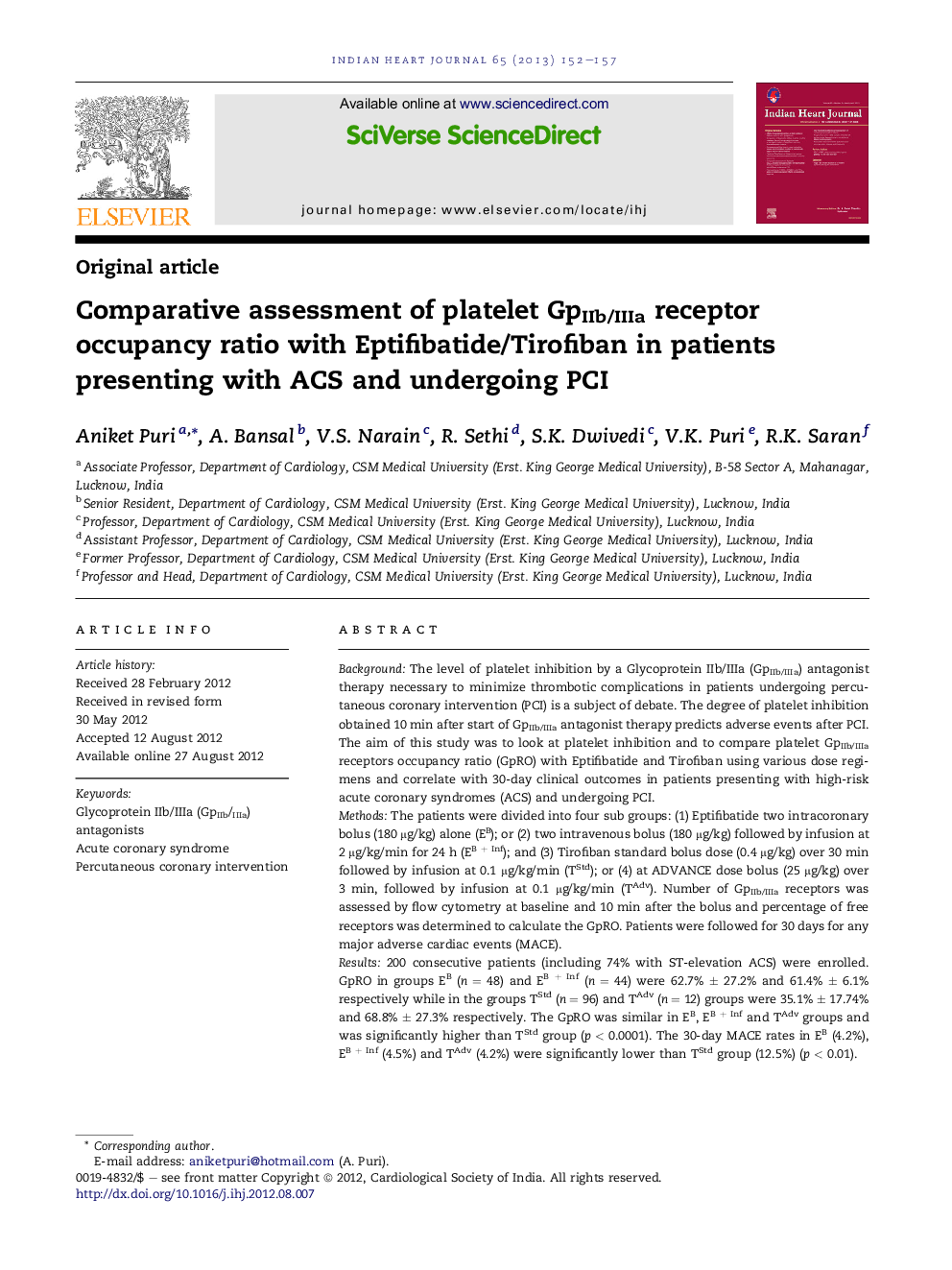| Article ID | Journal | Published Year | Pages | File Type |
|---|---|---|---|---|
| 2928296 | Indian Heart Journal | 2013 | 6 Pages |
BackgroundThe level of platelet inhibition by a Glycoprotein IIb/IIIa (GpIIb/IIIa) antagonist therapy necessary to minimize thrombotic complications in patients undergoing percutaneous coronary intervention (PCI) is a subject of debate. The degree of platelet inhibition obtained 10 min after start of GpIIb/IIIa antagonist therapy predicts adverse events after PCI. The aim of this study was to look at platelet inhibition and to compare platelet GpIIb/IIIa receptors occupancy ratio (GpRO) with Eptifibatide and Tirofiban using various dose regimens and correlate with 30-day clinical outcomes in patients presenting with high-risk acute coronary syndromes (ACS) and undergoing PCI.MethodsThe patients were divided into four sub groups: (1) Eptifibatide two intracoronary bolus (180 μg/kg) alone (EB); or (2) two intravenous bolus (180 μg/kg) followed by infusion at 2 μg/kg/min for 24 h (EB + Inf); and (3) Tirofiban standard bolus dose (0.4 μg/kg) over 30 min followed by infusion at 0.1 μg/kg/min (TStd); or (4) at ADVANCE dose bolus (25 μg/kg) over 3 min, followed by infusion at 0.1 μg/kg/min (TAdv). Number of GpIIb/IIIa receptors was assessed by flow cytometry at baseline and 10 min after the bolus and percentage of free receptors was determined to calculate the GpRO. Patients were followed for 30 days for any major adverse cardiac events (MACE).Results200 consecutive patients (including 74% with ST-elevation ACS) were enrolled. GpRO in groups EB (n = 48) and EB + Inf (n = 44) were 62.7% ± 27.2% and 61.4% ± 6.1% respectively while in the groups TStd (n = 96) and TAdv (n = 12) groups were 35.1% ± 17.74% and 68.8% ± 27.3% respectively. The GpRO was similar in EB, EB + Inf and TAdv groups and was significantly higher than TStd group (p < 0.0001). The 30-day MACE rates in EB (4.2%), EB + Inf (4.5%) and TAdv (4.2%) were significantly lower than TStd group (12.5%) (p < 0.01).ConclusionsStandard dose Tirofiban results in significantly lower rates of GpIIb/IIIa receptor occupancy ratio and this correlated with higher incidence of 30-day MACE in high-risk ACS patients undergoing PCI.
